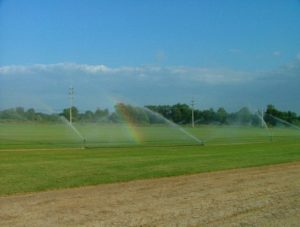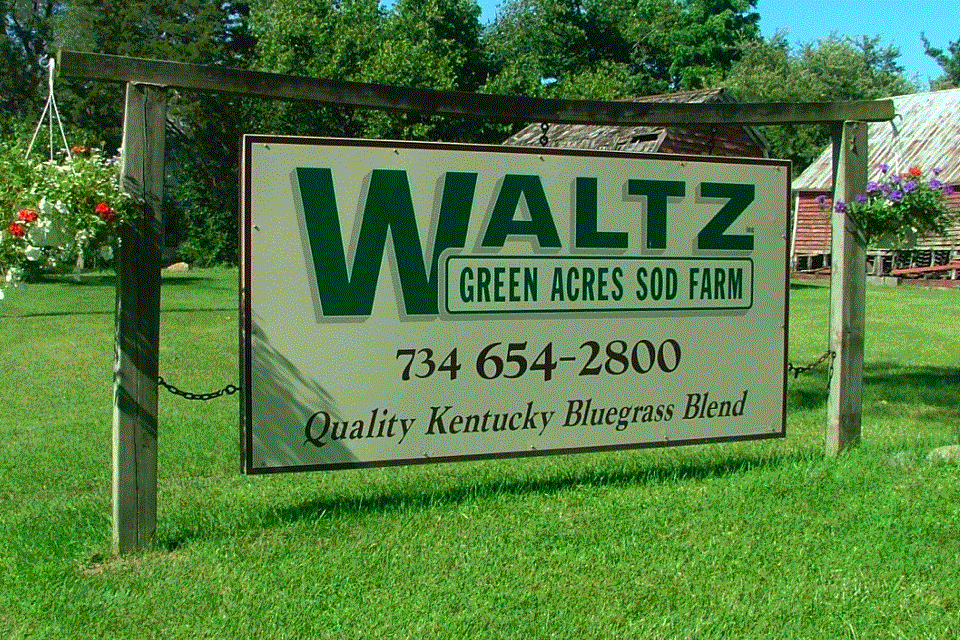 WATERING – Keep it Wet
WATERING – Keep it Wet
Begin watering sod as soon as you have an area big enough for your sprinkler(s). During hot summer months, you may want to water the sod with a hose if it drying out before the sprinkler goes on.
Give your new lawn at least 1 inch of water. Water frequently, up to 3 times a day, according to weather conditions, keeping sod very moist until it is firmly rooted (about 10-14 days). Watering mid-day will help with rapid root growth.
Be certain that your new lawn has enough moisture to survive hot, dry or windy periods. If the sod gets a dull grayish color to it, it is starting to dry up from lack of water.
Water areas near buildings more often where reflected heat can dry the turf consistently.
MAINTENANCE
Watering can be reduced gradually to once a week in absence of rain, apply at least 1 inch of water, encouraging a deep healthy root system. Avoid frequent, shallow watering that result in shallow roots and promotes weed germination and growth. You need to keep a healthy lawn to choke out weeds.
Mow weekly at a height between 2 ½ – 3 inches-never remove more than 1/3 of the top growth mowing. This height during the hot summer months will help you to reduce the stress on your lawn. Clippings can be removed but removal is not necessary. Bluegrass develops some thatch. Prime time to dethatch is in the fall.
Bluegrass requires a consistent fertilization schedule, starting in April every 4-6 weeks. Apply high nitrogen per 1000 sq. ft. on dry lawn, water thoroughly after fertilization. Use a complete fertilization twice a year in spring and fall (such as 19-19-19). This program requires water.
If you do not water regularly, just apply spring and fall applications during rainy seasons (such as 24-10-10) or look into a slow release fertilizer, discharging nitrogen over an extended period of time when water is available. It does not hurt your established lawn when not irrigated.
